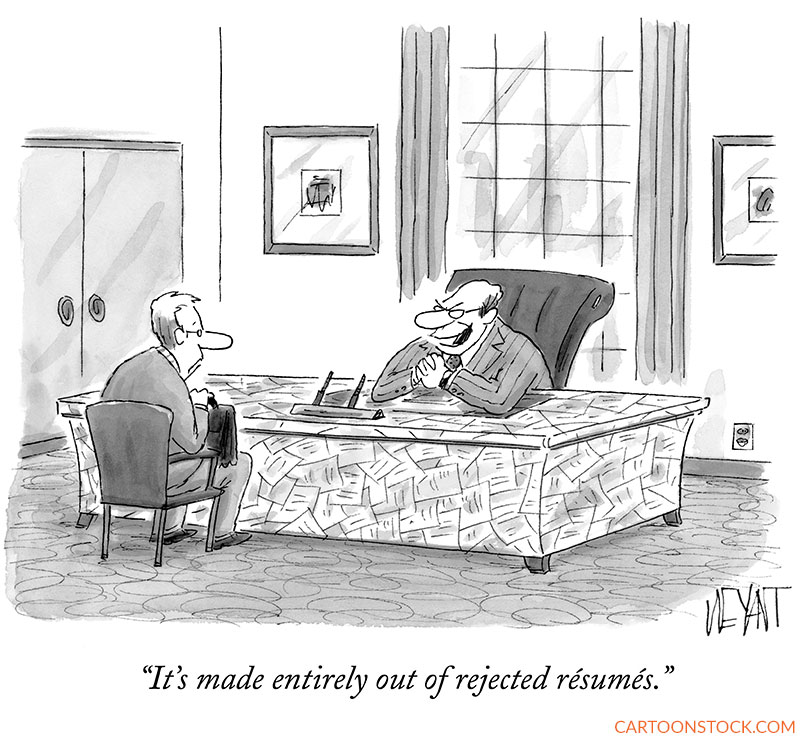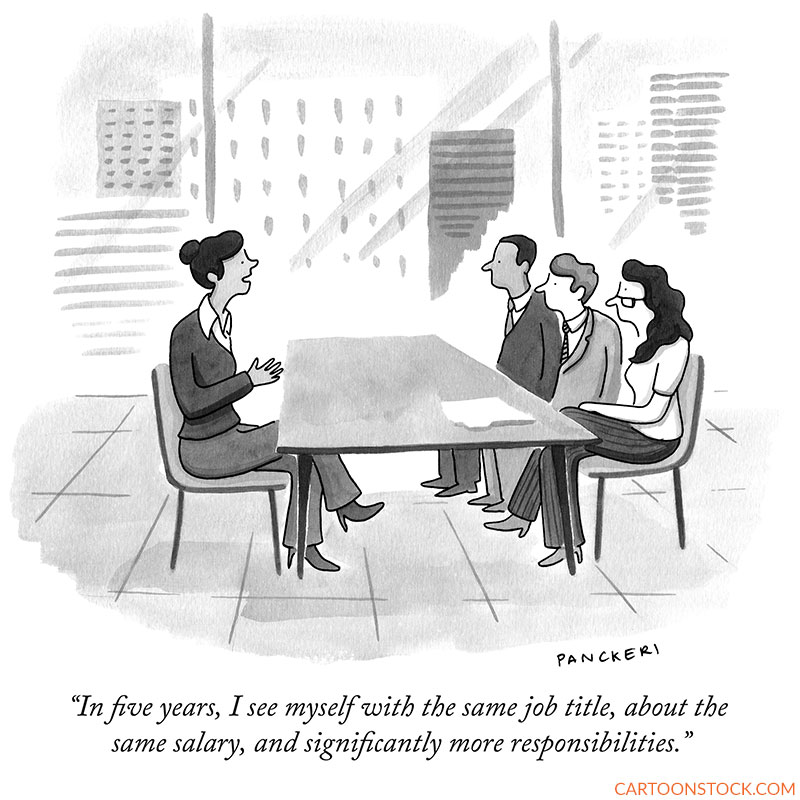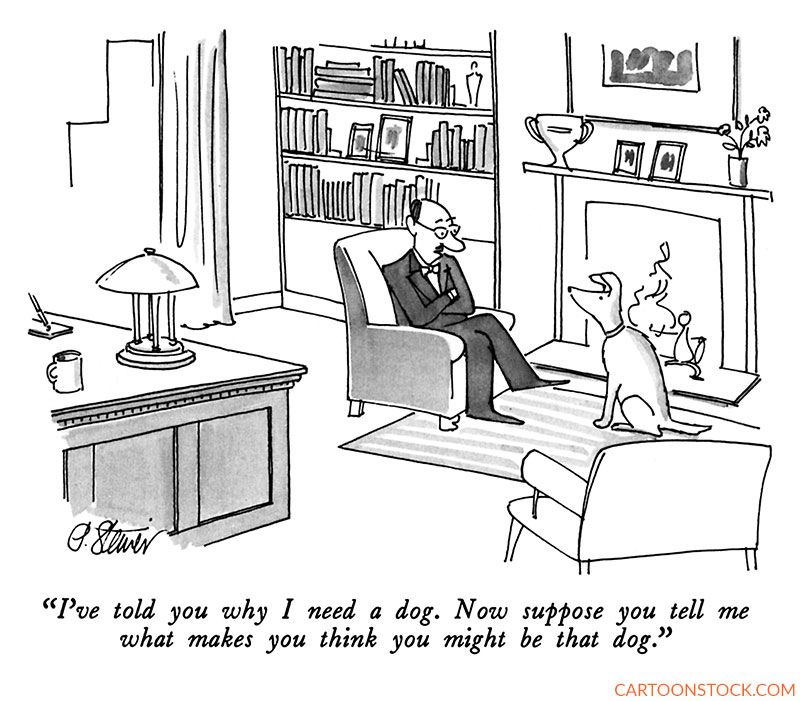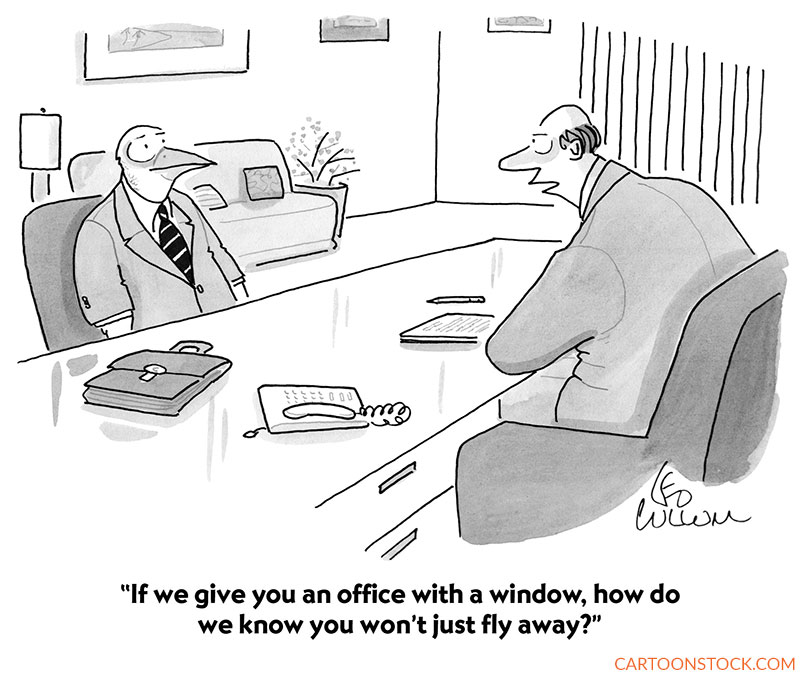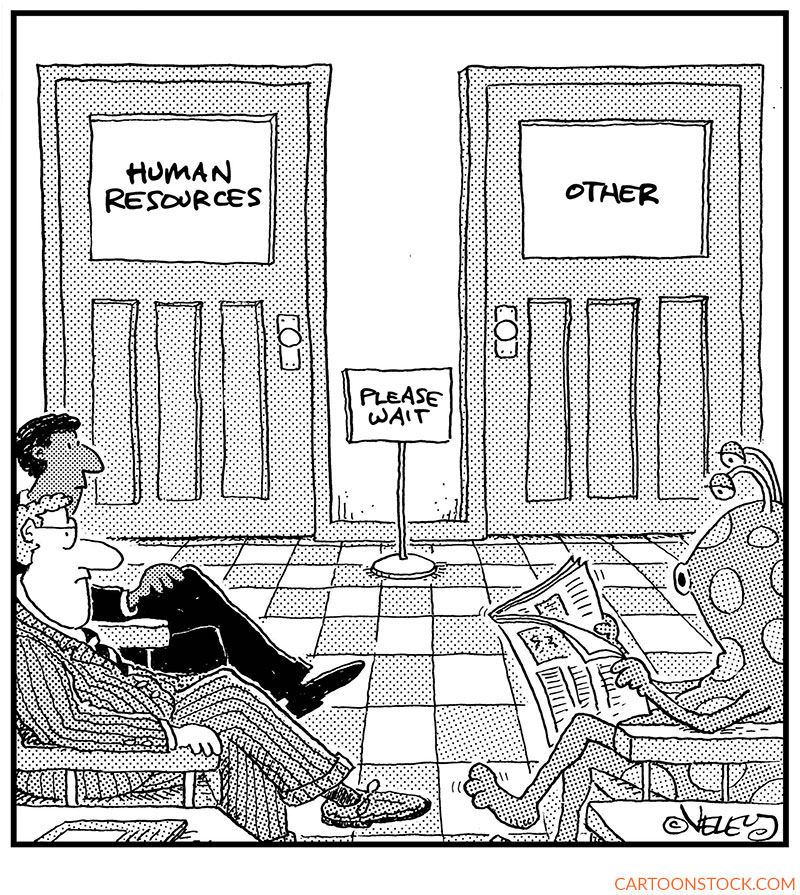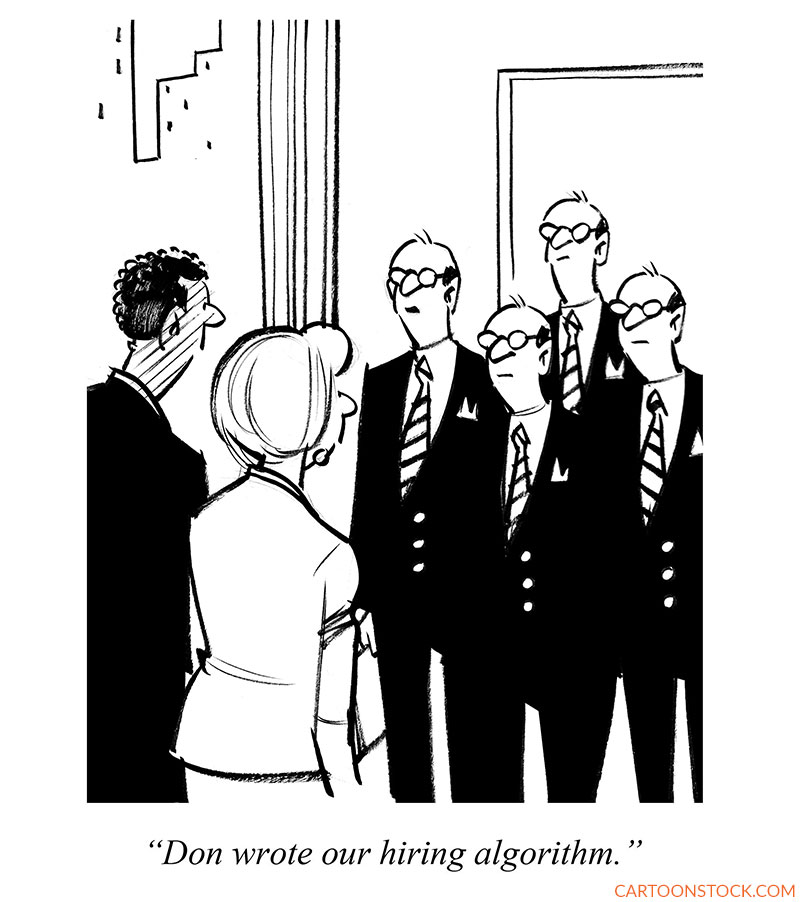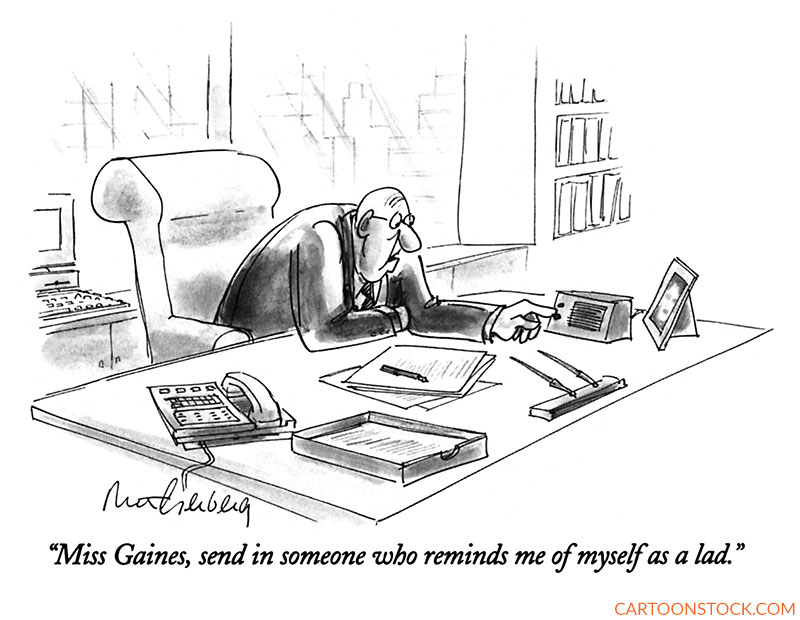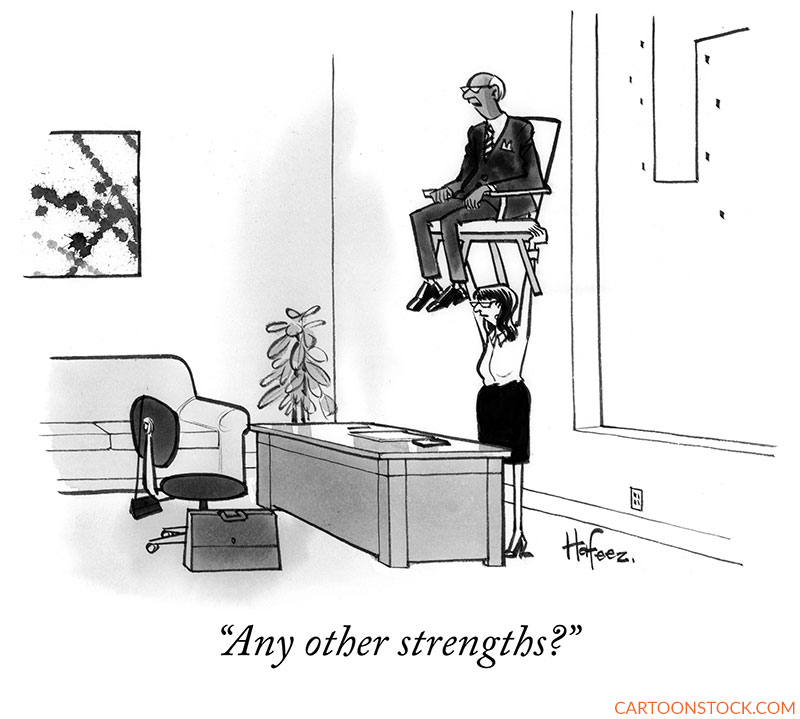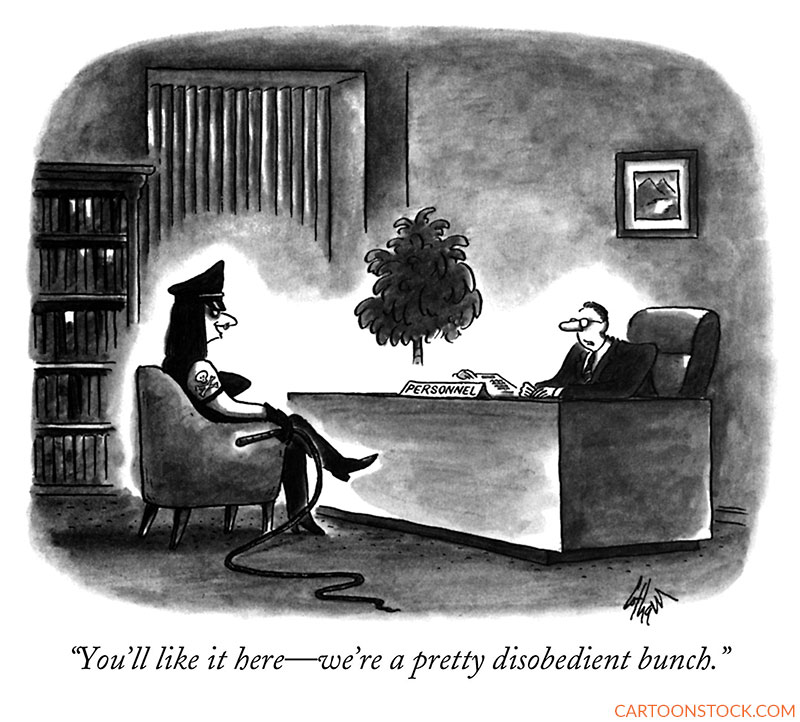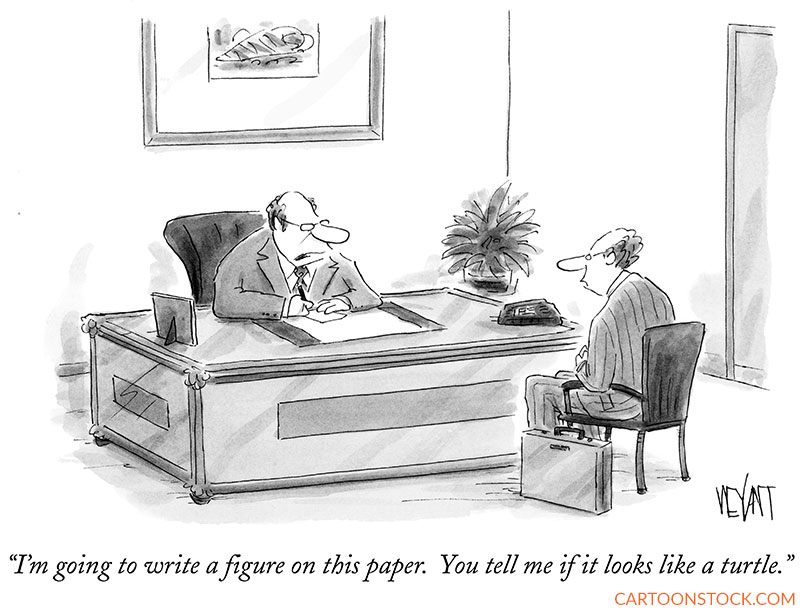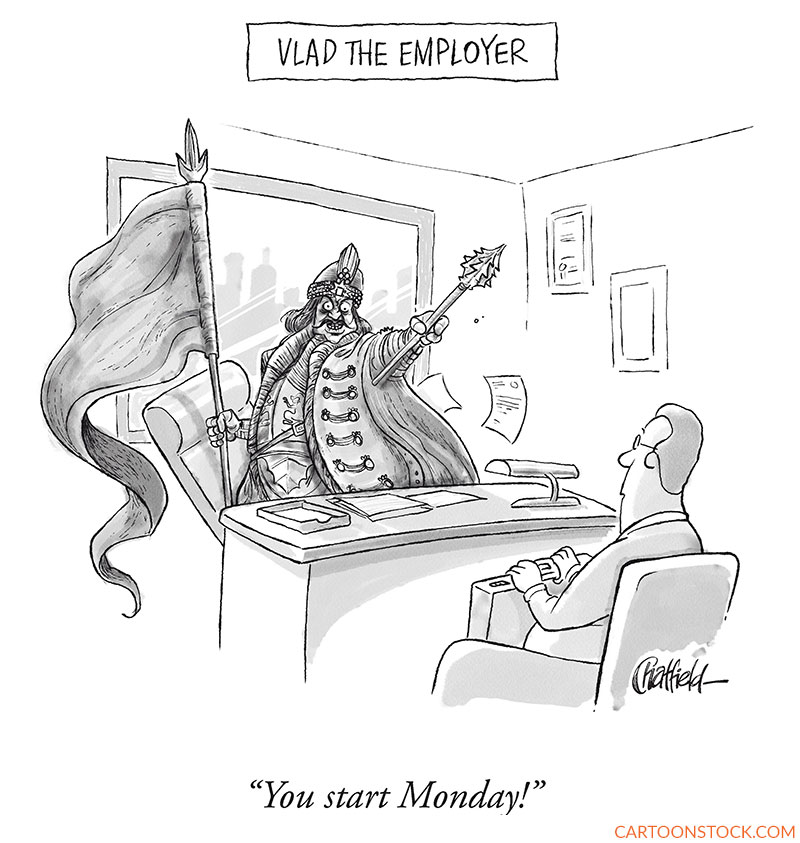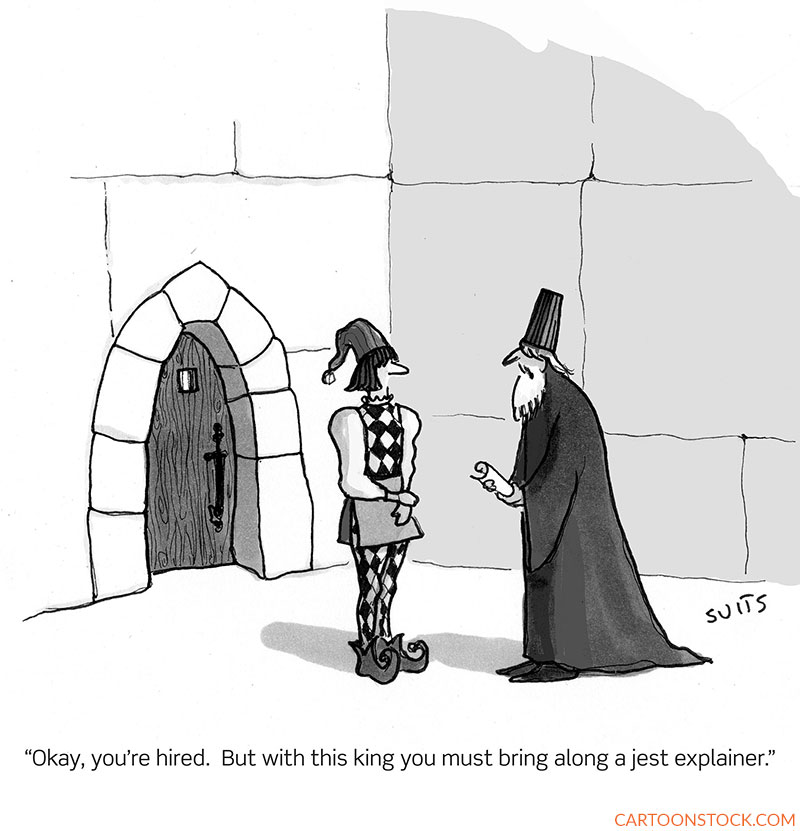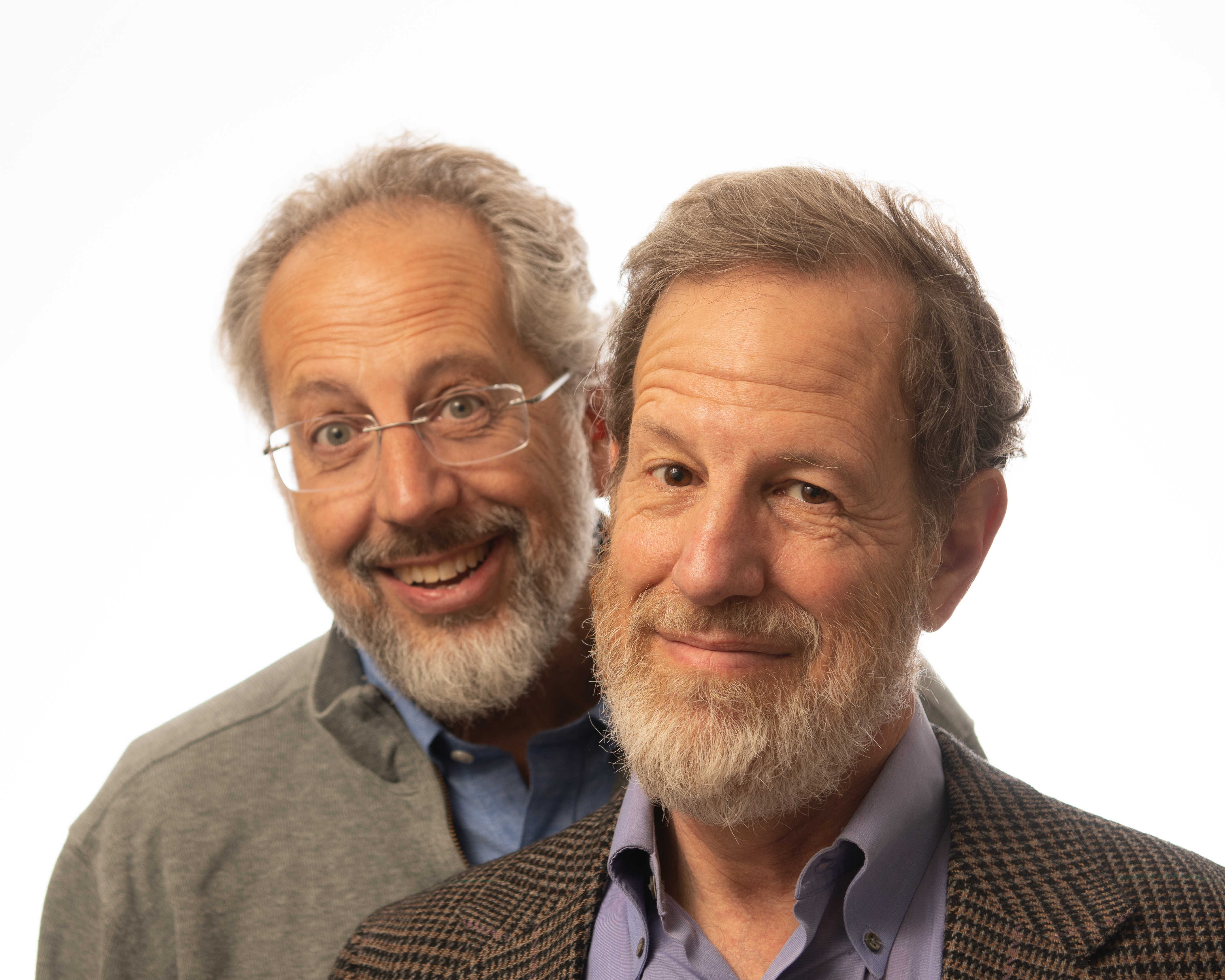
Cartoon critics Phil Witte and Rex Hesner look behind the gags to debate what makes a cartoon tick. This week our intrepid critics take a look at hiring cartoons.
With the economy recovering, businesses are hiring once again. The job interview remains a crucial step to securing a position. In the old days—one or two years ago—the interview occurred in the employer’s place of business, usually in an H.R. office. The anxiety of the job interview, the power dynamic involved, and the predictable questions and replies make this scenario a favorite one for cartoonists to explore.
The employer in Chris Weyant’s cartoon is a malicious character with an evil smile. Before the interview has begun, he lets the poor applicant know that he exploits even rejected candidates. The young man can only shield himself with his attaché case. This is a great example of how a well-rendered image and funny gag work together to create a clever and wholly original cartoon.
“Where do you see yourself in five years?” is the predictable question of the lazy interviewer, so common that the inquiry need only be implied in Drew Panckeri’s cartoon. A candid response is seldom expected, and that’s the basis for the humor.
Like musicians, cartoonists engage in theme and variation. The theme of the job interview is the employer-applicant relationship; variations are at play in the next few cartoons. Replace one of the human characters with, say, an animal. Peter Steiner imagined such a scenario. The caption presents an ongoing narrative between man and dog. Note that the dog is just a dog, sitting patiently by the fireplace—not an anthropomorphized creature—which suggests that the man may be simply insane.
By contrast, Leo Cullum’s job applicant is a bird-human hybrid. The interviewer’s question is, therefore quite reasonable, while the setup is wildly imaginative. The cartoonist, incidentally, made an interesting artistic decision to stuff the bird’s wings, which are presumably fairly large, into the suit’s shortened sleeves.
Taking things one step further, Bradford Veley has replaced the job-seeker with a character neither hu-man nor Earthly animal. The alien seems the most at ease among the applicants, apparently whistling a tune through his single facial orifice, calmly reading the newspaper, with one foot bobbing. The cartoon takes aim at the unfortunate term “human resources,” which crept into the lexicon a few decades ago, replacing the less technocratic term “personnel.”
The need for diversity in the workforce has never been more urgent. However, achieving diversity goals can be elusive if the hiring practices are inherently biased, a point made in Kaamran Hafeez’s cartoon. Here again, the image is crucial to getting the gag across. At least the new hires aren’t all the same height. That’s a start, right?
Mort Gerberg makes the same point but takes a different tack. This boss will only feel comfortable with someone who seems vaguely familiar to him—someone like him but younger. His age is conveyed not only through his physical appearance but by the cartoonist’s inclusion of the word “lad,” a term that evokes a bygone day.
The old, male boss gets his comeuppance, so to speak, in another cartoon by Hafeez, this one with a feminist sensibility. The image itself is both powerful and amusing and contrasts with the boss’s bland response. The cartoon evokes a little vignette: moments before this scene, the reader imagines the woman calmly getting up from her chair—note the hanging purse and briefcase on the floor—positioning herself behind the man, and without a word, hoisting him.
The inky look of this Frank Cotham cartoon pairs well with its dark humor. What light there is seems to emanate from the two characters, not via the window with its gray shades. The caption expresses the bland-looking interviewer’s desires rather delicately. Clearly, this applicant nailed the interview.
If the interview goes well, the employer may next proceed to the salary negotiation stage. It’s a tricky matter for both parties. In another cartoon by Chris Weyant, the gag is set up with a line that leads one to expect the speaker to slip the piece of paper with a dollar amount to the applicant. With a play on the word “figure,” that expectation is deftly defied.
A word of welcome from the new employer is cause for celebration, but the boss here is more intimidating than welcoming. Jason Chatfield relies on his considerable artistic skill to create a villainous character in action. Note the foreshortened outstretched arm, flowing banner, and toppling chair, all signaling dramatic movement. Compared to the bug-eyed Vlad, rendered in various shades of gray, the job applicant all but disappears. The humor relies primarily on anachronism but also on the contrast between the dynamic drawing and the prosaic caption. Of course, knowledge of the historic Vlad in question is assumed.
The successful job applicant may not know what to expect. The mentor, usually an old hand, can ease the transition into employment. In this cartoon by Julia Suits, the mentor gives the new guy an inside tip. Other cartoonists can especially appreciate this cartoon; some readers don’t “get” the humor that is clear enough to the cartoon’s creator. The lesson: know your audience.


